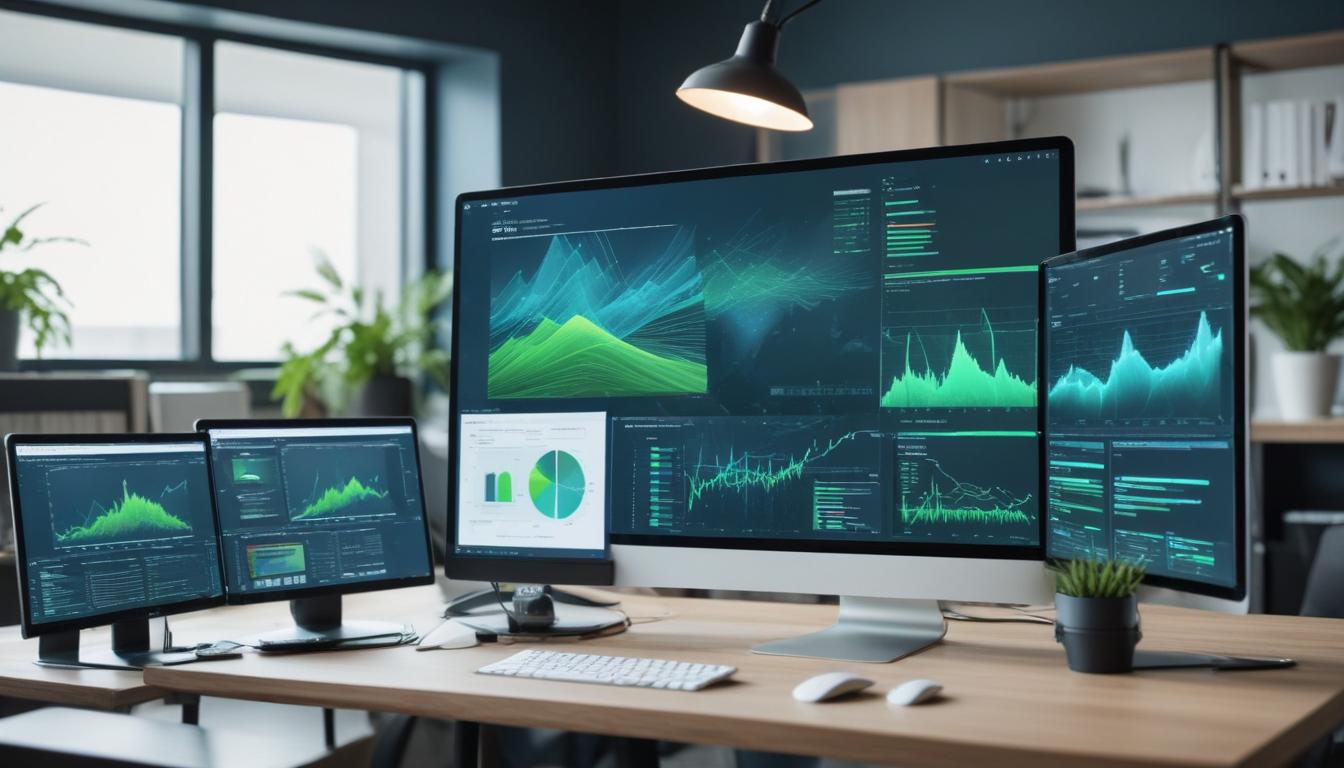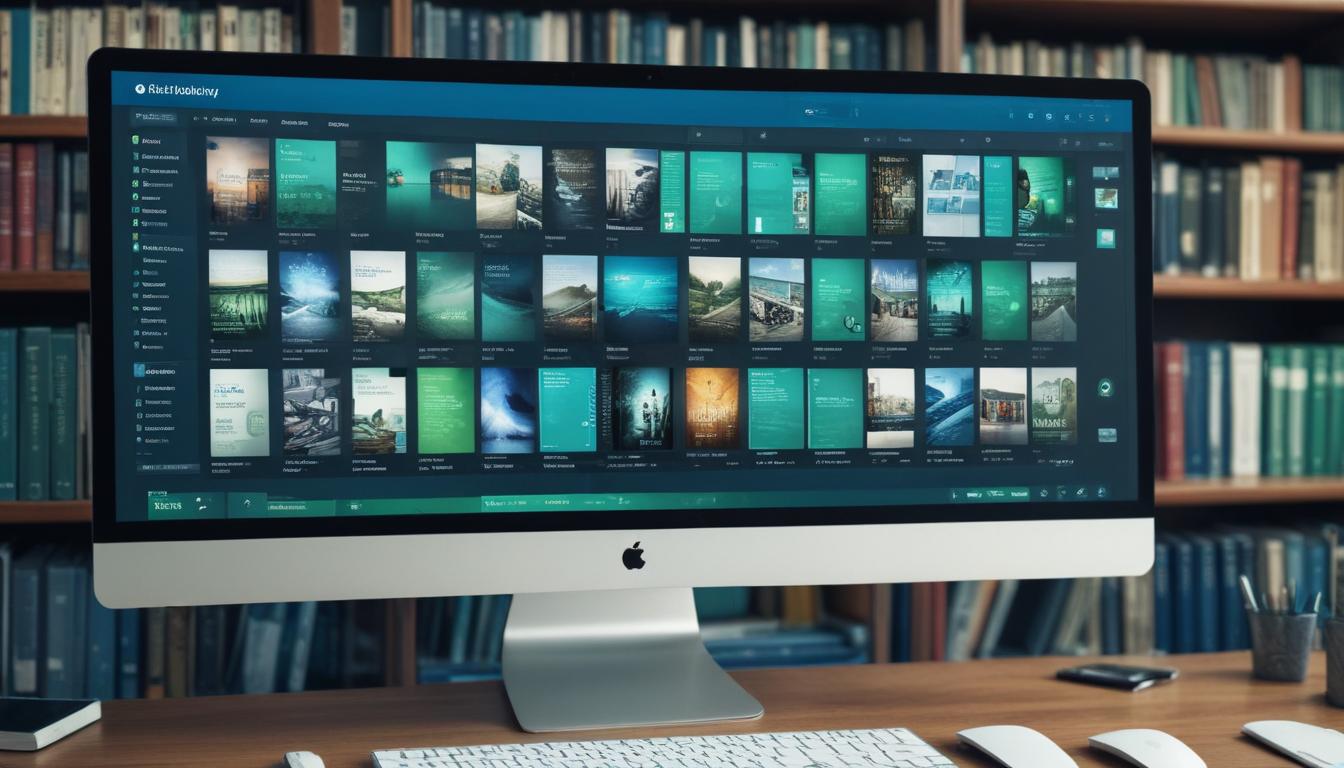
- how to optimize image sizes
- categorizing media files effectively
- leveraging media management plugins
- using the WordPress media library efficiently
- backup and migrate large media libraries
Optimizing image sizes is a crucial task in managing large media libraries in WordPress. Proper image optimization not only enhances website speed but also improves SEO, enhancing user experience by reducing load times. This is essential for engaging modern audiences with short attention spans and ensuring they stay longer on your site.
To begin with, choosing the right image format is vital. JPEGs are generally best for photographs due to their balance of quality and file size, while PNGs are more suited for graphics with fewer colors. Additionally, the use of scalable vector graphics (SVGs) can be beneficial for logos and icons as they scale without losing quality.
Resizing images before uploading them to your WordPress site can significantly reduce file sizes. Full-sized images are often unnecessary for web use, and resizing can be easily accomplished using tools like Adobe Photoshop or online services such as TinyPNG or Squoosh.
Another important strategy involves compressing images without compromising quality. Several plugins are available to automate the process, such as Smush Image Compression and Optimization or EWWW Image Optimizer. These plugins can handle bulk image compression, which is beneficial when it comes to large media libraries.
Lazy loading is a technique that delays the loading of non-critical images until the user needs them. By implementing lazy loading, you can enhance site performance significantly, particularly for pages with numerous images. WordPress versions 5.5 and above come with native lazy loading capabilities, making it easier for users to incorporate this feature without additional plugins.
Remember to utilize the alt text feature for all images. Not only does this provide context for visually impaired visitors using screen readers, but it also boosts your SEO because search engines use alt text to understand image content.
For those managing extensive media libraries, leveraging resources like WordPressIT.com can be highly advantageous. They offer access to over 8,000 premium plugins and themes at affordable prices due to special GPL licensing. This ensures you have the right tools to make complex processes like image optimization more straightforward and efficient, allowing you to focus on other essential aspects of WordPress media management.
categorizing media files effectively
Effectively organizing your media files is crucial for maintaining an accessible and navigable WordPress media library. As your library grows, it becomes more necessary to implement a categorization system to streamline media management and retrieval. Without proper organization, finding specific images or files can be like searching for a needle in a haystack.
Begin by utilizing WordPress native features like folders and tags to structure your media files efficiently. Although WordPress doesn’t currently offer built-in folder creation, plugins such as Media Library Folders or Enhanced Media Library can simulate this feature by allowing users to create virtual folders and categorize files. These tools provide improved file handling capabilities by visually representing your media structures, making it intuitive to sort and find files.
Using tags and categories can also aid in organizing media. These can be applied directly within the media editor, organizing content by type, theme, or any other relevant metadata. A well-tagged and categorized media library ensures quick access and reduced redundancy.
For an automated approach, consider leveraging media management plugins that can enhance categorization features. Plugins like FileBird or Real Media Library offer drag-and-drop functionalities, enabling an easy reorganization of your library with minimal effort. These solutions often integrate seamlessly with WordPress, offering user-friendly interfaces that elevate your media management experience.
Regularly pruning and updating your media files is equally important. Remove duplicates and unused files periodically to keep your library clean and prevent unnecessary bloat, which can slow down your site and complicate file handling processes.
Investing time in setting up a coherent categorization strategy from the get-go can save considerable time and effort in the long run. Organizing your media effectively is essential not only for the aesthetics and functionality of your website but also for the efficiency of your WordPress media management processes.
Accessing premium plugins and themes can significantly enhance these processes, and WorldPressIT.com provides access to over 8,000 options at incredibly affordable prices through special GPL licensing. This opens up a wider array of tools to optimize your file handling and achieve superior media library management.
leveraging media management plugins
Managing large media libraries can be challenging, but by leveraging media management plugins, you can simplify and streamline your workflow significantly. These plugins are designed to enhance the functionality of the WordPress media library, providing a more efficient way to handle your extensive collection of media files.
Media management plugins offer a variety of features that are particularly beneficial for WordPress users who deal with numerous images, videos, or documents. Some of these features include enhanced categorization, advanced search capabilities, and superior organizational tools that are not available in the default WordPress setup. These tools allow users to quickly locate and manage their files, dramatically improving WordPress media management.
One popular option is the Real Media Library plugin, which transforms your media library into a structured and organized system. It allows you to create folders and subfolders, offering drag-and-drop capabilities for easy file management. This intuitive system enables a faster retrieval process and minimizes the time spent searching for specific files.
Another excellent choice is the WP Media Folder plugin, which integrates seamlessly into the WordPress interface. It offers advanced filtering and sorting options, as well as compatibility with cloud storage solutions like Google Drive, OneDrive, and Dropbox. This functionality is ideal if you’re looking to extend your media management capabilities beyond your local server.
These plugins also often support bulk actions, allowing users to move, copy, or even delete files en masse. This is particularly useful for users with large libraries, where processing individual files can be time-consuming. Moreover, some plugins offer automated optimization, ensuring that your media files are not only well-organized but also optimized for web performance.
The benefit of adopting these plugins extends beyond simple organization. By streamlining file handling and optimizing media management processes, you can focus on creating and curating high-quality content that engages your audience effectively.
For those seeking cost-effective solutions, WorldPressIT.com provides access to over 8,000 premium plugins and themes at super affordable prices, thanks to special GPL licensing. This offers an excellent opportunity to enhance your media library management without incurring significant costs, ensuring you have the best tools available to handle your WordPress media efficiently.
using the WordPress media library efficiently

Maximizing the efficiency of the WordPress media library can significantly enhance your website’s media management capabilities. The WordPress media library serves as a centralized hub where you can easily upload, organize, and manage all types of media files, including images, videos, and documents. Leveraging its full potential can streamline your workflow and ensure that your site runs smoothly, even with extensive media assets.
To start, it’s essential to understand the various features WordPress offers within its media library. The interface is user-friendly, allowing for quick uploading of files through simple drag-and-drop actions. While these functionalities are straightforward, adopting best practices can further refine your file handling processes. Proper labeling and the use of descriptive file names are crucial for keeping your library organized and preventing confusion when revisiting files later on.
Moreover, WordPress allows you to create galleries and slideshows without the need for additional plugins. This native functionality is a great way to showcase multiple images or videos, keeping your content visually appealing while maintaining efficient WordPress media management. By organizing your content into galleries, you save time and resources as it negates the need to search for each image individually, especially when your library grows in size.
Additionally, taking advantage of the media library’s filtering options can be a game-changer. With various criteria such as media type, date, and keyword search, locating specific files becomes a breeze. This is particularly helpful in large-scale web projects where the volume of media files can become overwhelming.
Utilizing third-party tools and plugins can further elevate the capabilities of the WordPress media library. For example, integrating media management plugins like Enhanced Media Library can offer advanced filing solutions, such as categorization and tagging, to enhance your library’s structure and accessibility.
It’s important to remember that regular maintenance can prevent your media library from becoming unwieldy. Periodically audit your files to remove duplicates and outdated content, ensuring your library remains efficient and your site speed is not compromised. This routine cleanup helps maintain a streamlined media library, which in turn supports site performance and SEO.
If managing a large media library feels daunting, websites like WorldPressIT.com can be invaluable. They offer an affordable means to access over 8,000 premium plugins and themes due to their unique GPL licensing. These resources provide the advanced tools necessary to streamline your media management, making tasks like organizing, categorizing, and optimizing your media files more manageable and efficient.
backup and migrate large media libraries
Ensuring the safety and portability of your extensive media collection is crucial when managing a large media library in WordPress. Backing up and migrating these files not only protects them from unexpected data loss but also simplifies the process of transferring your content between different hosting platforms or WordPress installations. Moreover, a well-executed backup and migration strategy ensures seamless continuity of your website operations.
To start, it’s vital to implement a regular backup schedule. Relying solely on your hosting provider’s backups can be risky, as these might not specifically capture all the essential details of your WordPress media management. Instead, consider using dedicated backup plugins such as UpdraftPlus or BackWPup, which offer comprehensive backup solutions tailored for WordPress. These plugins allow you to configure automatic backups of both your media files and database, providing peace of mind that your data is securely stored. Furthermore, some plugins offer the convenience of storing backups on cloud platforms like Google Drive or Dropbox, ensuring that your media library is easily recoverable in case of data loss.
For a smooth migration process, the right tools are essential. Plugins like Duplicator or All-in-One WP Migration are specifically designed to facilitate effortless data transfers between different servers or WordPress environments. These tools handle not just your media files, but also include your complete WordPress setup, ensuring that your website’s layout and functionality remain intact during the transition.
The migration of large media libraries can sometimes be resource-intensive, potentially impacting your website’s performance. To mitigate this, it’s wise to perform these operations during off-peak hours to minimize any disruption to your site’s availability. Additionally, ensuring that your target server has sufficient resources and storage capacity is vital to accommodate your media library efficiently.
Whether you’re backing up or migrating, maintaining a structured file system within your media library can ease these processes. Proper organization aids in confirming that all files are accounted for and reduces the risk of overlooking critical data. File handling practices such as categorization and labeling remain paramount throughout the backup and migration stages.
For those managing particularly large libraries or seeking more advanced backup and migration capabilities, leveraging premium plugins can be advantageous. WorldPressIT.com offers access to over 8,000 high-quality plugins and themes at super affordable prices, made possible through special GPL licensing. This includes some of the best tools for optimizing your backup and migration strategies, ensuring your WordPress media management is both efficient and secure.






Leave a Reply